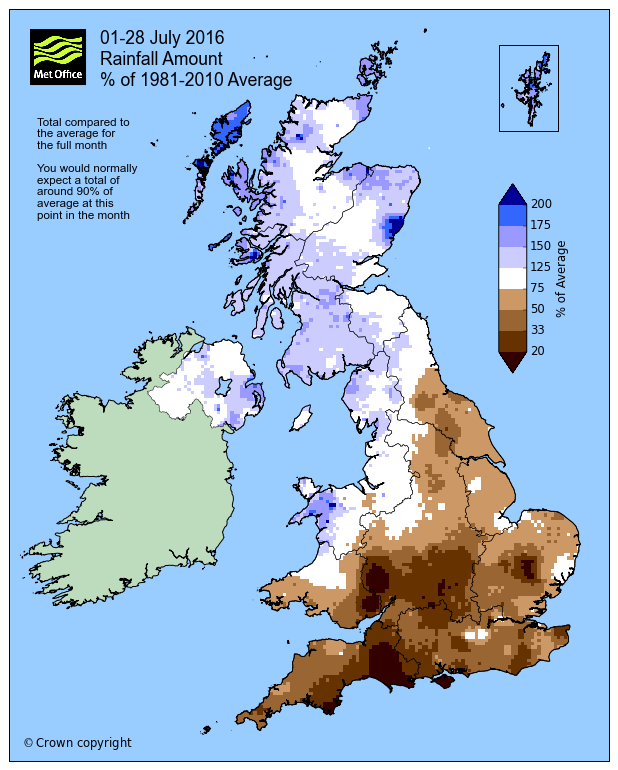- Joined
- Mar 1, 2009
- Messages
- 1,065
- Reaction score
- 179
- Location
- S Warwickshire, uk
- Hive Type
- National
- Number of Hives
- 40
Saw this in a couple of places over the weekend and it helped to explain my impression of the main summer flow in my area - ie there was no soil moisture to allow the plants to produce copious nectar

Forage available within range of my hives is lime/clover/blackberry/privet. Supers have filled but the better weather came too late for lime and whilst the bees were very active in the 2nd-3rd week of July there was no exceptional filling of supers. I've read with jealousy the reports of supers being filled in 3-4 days elsewhere - it wasn't happening here. My pre-harvest assessment is that most of my honey producing hives average 2 full supers equivalent, or at least they are before the bees evaporate all the moisture/consume it all in this week's mixed weather/get robbed out by wasps.

Forage available within range of my hives is lime/clover/blackberry/privet. Supers have filled but the better weather came too late for lime and whilst the bees were very active in the 2nd-3rd week of July there was no exceptional filling of supers. I've read with jealousy the reports of supers being filled in 3-4 days elsewhere - it wasn't happening here. My pre-harvest assessment is that most of my honey producing hives average 2 full supers equivalent, or at least they are before the bees evaporate all the moisture/consume it all in this week's mixed weather/get robbed out by wasps.
Last edited:



